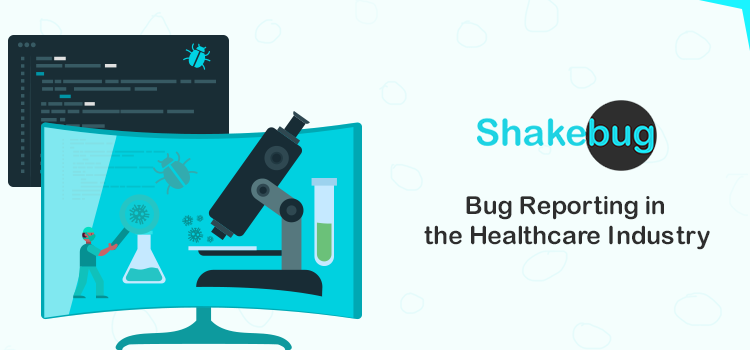In the healthcare industry, bug reporting is critical for ensuring that mobile apps function properly and provide accurate information to users. With the increased use of technology in healthcare, developers must consider specific factors when designing and testing mobile apps.
This article will go over some important considerations for bug reporting in the healthcare industry and how they can affect the overall success of a mobile app.
Understanding the Healthcare Industry
In the healthcare industry, bug reporting is critical to ensuring patient safety and satisfaction. knowing the increasing popularity of mobile apps in this industry, it is critical to understand how these bugs affect patients’ health and well-being.
When developing and maintaining mobile apps for their patients, healthcare professionals must first understand the industry’s unique challenges and regulations. By taking these factors into account, they can ensure that their app meets all applicable standards while also providing efficient and effective care to their users.
There have been numerous incidents in the past that indicate the importance of proper bug-reporting procedures. For example, in 2015, Anthem Inc., one of the largest health insurance companies in the United States, experienced a massive data breach due to an unreported vulnerability on its website.
As a result, millions of customers’ sensitive information, including names, birth dates, and social security numbers, was exposed. Such incidents highlight the importance of thorough bug-reporting processes and protocols in mobile apps used by healthcare professionals.
Key Considerations for Bug Reporting in Healthcare Mobile Apps
1. Compliance and Regulatory Requirements
Compliance and regulatory requirements are among the most important considerations. Healthcare apps must follow strict regulations and guidelines established by governing bodies such as HIPAA (Health Insurance Portability and Accountability Act) to protect sensitive patient information. Any bugs or issues discovered within the app must be reported and addressed immediately to ensure compliance with these regulations.
Failure to do so may result in penalties or legal action against the app developers. Thus, thorough testing and efficient bug-reporting processes are critical for ensuring compliance in healthcare mobile apps.
2. Patient Data Confidentiality
Healthcare apps often deal with sensitive information such as medical records and personal details, so developers must ensure the data’s security and privacy are maintained. This includes using strong encryption methods and strict access controls to prevent unauthorized access or disclosure of confidential patient information.
Furthermore, regular testing and updates should be performed to address any potential vulnerabilities in the app’s code that may jeopardize patient data confidentiality. Healthcare app developers can maintain user trust while also protecting sensitive information by prioritizing patient data confidentiality in their bug-reporting processes.
3. Real-time Monitoring and Reporting
Real-time monitoring and reporting are crucial considerations for bug reporting in healthcare mobile apps. In the fast-paced world of healthcare, every second counts, and problems with a mobile app can have serious consequences.
That is why it is critical to have real-time monitoring in place so that any bugs or glitches can be identified and reported quickly. This enables quick action to be taken, reducing potential harm or disruption to patients’ care. Furthermore, real-time reporting ensures that developers are aware of any issues as they arise, allowing them to address them quickly and constantly improve the app’s performance.
4. User-Friendly Bug Reporting Interfaces
One important aspect is the easy-to-use bug-reporting interface. This entails developing a simple and intuitive process for users to report any issues they encounter while using the application. By making this process simple and accessible, developers can ensure that bugs are reported quickly and accurately, resulting in faster resolutions.
Additionally, having a user-friendly bug-reporting interface can improve the overall user experience by demonstrating that the developer values their feedback and is actively working to improve the app’s functionality.
Best Practices for Bug Reporting in Healthcare Apps
1. Establishing a Comprehensive Bug Reporting Process
Establishing a comprehensive bug-reporting process is critical for healthcare apps to ensure system safety and functionality. This includes having clear guidelines for reporting bugs, determining who should be involved in the process, and specifying what information should be included in reports. So, it’s better to choose a perfect mobile app bug reporitng tool!
It’s also important to have a team or individual in charge of managing bug reports and responding to them as soon as possible. Regular communication with users about reported bugs, as well as status updates, can help to build trust and satisfaction.
2. Prioritizing Bug Fixes
Prioritising bug fixes in healthcare apps is critical. considering the sensitivity of healthcare information and the potential consequences of errors, addressing bugs quickly can make all the difference. It is critical to have a system in place for categorizing and prioritizing reported bugs based on severity and impact on patient care.
This ensures that critical issues are addressed first, while also allowing developers to work efficiently on resolving less urgent bugs. By establishing clear priorities, healthcare apps can improve user experiences and maintain trust with both patients and medical professionals.
3. Continuous Improvement and Feedback Loop
One of the best practices for reporting bugs in healthcare apps is to create a continuous improvement and feedback loop. This means that once a bug has been reported, it should be addressed and fixed as soon as possible, but it should also be followed by an evaluation of how the problem occurred and what can be done to prevent similar bugs in the future.
Collecting user feedback on their app experience can also help identify potential issues or improvement areas. By continuously evaluating and improving the app’s functionality, developers can ensure that their healthcare app provides a consistent user experience for both patients and doctors.
Conclusion
Bug reporting is critical in the healthcare industry to ensure that apps work properly and provide accurate patient information. Thorough testing before release, clear communication between developers and users, prompt response to reported bugs, and regular updates to address any issues are some of the best practices for bug reporting in healthcare applications.
Healthcare apps that follow these guidelines can provide a better user experience and improve patient outcomes. In short, proper bug reporting is critical for ensuring the quality of healthcare apps and should be taken seriously by both developers and users.


